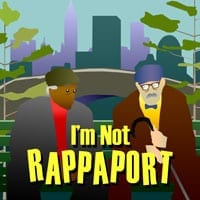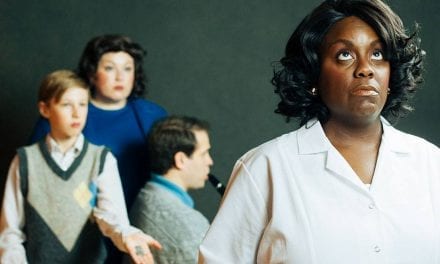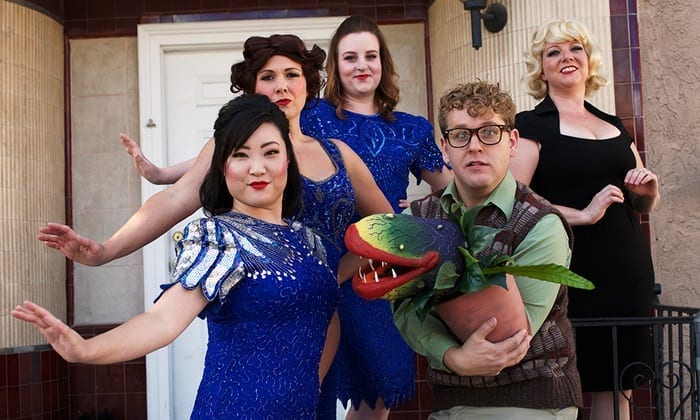CEDAR CITY — The final production rounding out this years Neil Simon Festival in Cedar City is I’m Not Rappaport by Herb Gardner. I’m Not Rappaport is a story revolving around two elderly gentlemen residing in New York City dealing with the physical, mental, financial, and emotional effects of aging. It originally played on Broadway in 1985 and won the Tony Award for Best New Play.
The setting for the entire show is a park bench in Central Park in New York City. Set designer Daniel Whiting did an excellent job of creating a visually pleasing location that seemed realistic but did not retract from the actors. I was also impressed by the lighting design by Jerry Bixman and Rebekah Kanduth. A few of the scenes start in the afternoon and end earlier in the evening, and the lighting gave the audience a realistic representation of that timeline.
The main action of the play surrounded the two main characters of Nat, played by Richard Bugg, and Midge, played by Clarence Gilyard. Both of these men are accomplished actors as well as theatre professors at Southern Utah University and the University of Nevada Las Vegas, respectively. Because of these credentials, I had very high hopes for the quality of this production. I was not disappointed.
One of the first scenes that truly impressed me was when Gilyard portrayed an incident of falling down. This can be a terrifying and delicate thing for a man of 81 years old, as Midge is. I was impressed by both Gilyard and Bugg, regarding the way they handled the delicacy of that scene, while still adding humor in the mix. Next, there is a scene where the two gentlemen end up laughing so hard that they begin to cough. It left me feeling like I was sitting in a room with a beloved grandfather or great uncle, and I found myself wishing they would continue to tell more stories. Both of these men were able to use the plot and characterization to touch on significant challenges of aging and losing the strength and independence that often comes along with aging. The subject matter in the show is deep, profound, and in some ways uncomfortable. However the humor and chemistry between the two main characters kept me laughing while pondering.
There are two performances of minor characters worth mentioning. The first is a character named Danforth, who must give bad news to Midge. Danforth, played by Henry Ballesteros, represents how the young and able-bodied easily dismiss and neglect those who may seem to have lost their usefulness. This would be a character that would be easy to hate. Yet, Ballesteros played the part with enough naiveté and sympathy to allow me to reflect uncomfortably on whether I have ever dismissed someone due to age or any other “defect” that may have been present. The interesting thing about this character was not that he was evil, but that the character was realistic, which in some ways could be even more troublesome than outright evil.
Finally, the portrayal of Clara, Nat’s daughter played by Melissa Nield, was an excellent representation of the struggle of being an adult child caring for an aging parent. Now being responsible for the one who has always been responsible for you can be heartbreaking, and most of the time involves choices that no one ever wants to make. There is an excellent scene where Nield explains to her father the options for him and that she has to do what is best for her father—even if he does not see what is best for him. As a mother those conversations come easy with their children, but as a daughter, those conversations are difficult at best. Nield played this scene with the right amount of emotion and conviction, and helped convey the depth of difficulty for everyone involved in the situation.
Overall, the production was phenomenal, as well as thought provoking. I overheard some younger people in the audience express a little bit of confusion and discomfort during the show, due to the fact that it is hard to watch and see the reality of mortality. That conversation confirmed to me that the show was doing what I would think director Douglas Hill had in mind, encourage people to stop and think about how and why we treat people the way we do, and if we should change.






